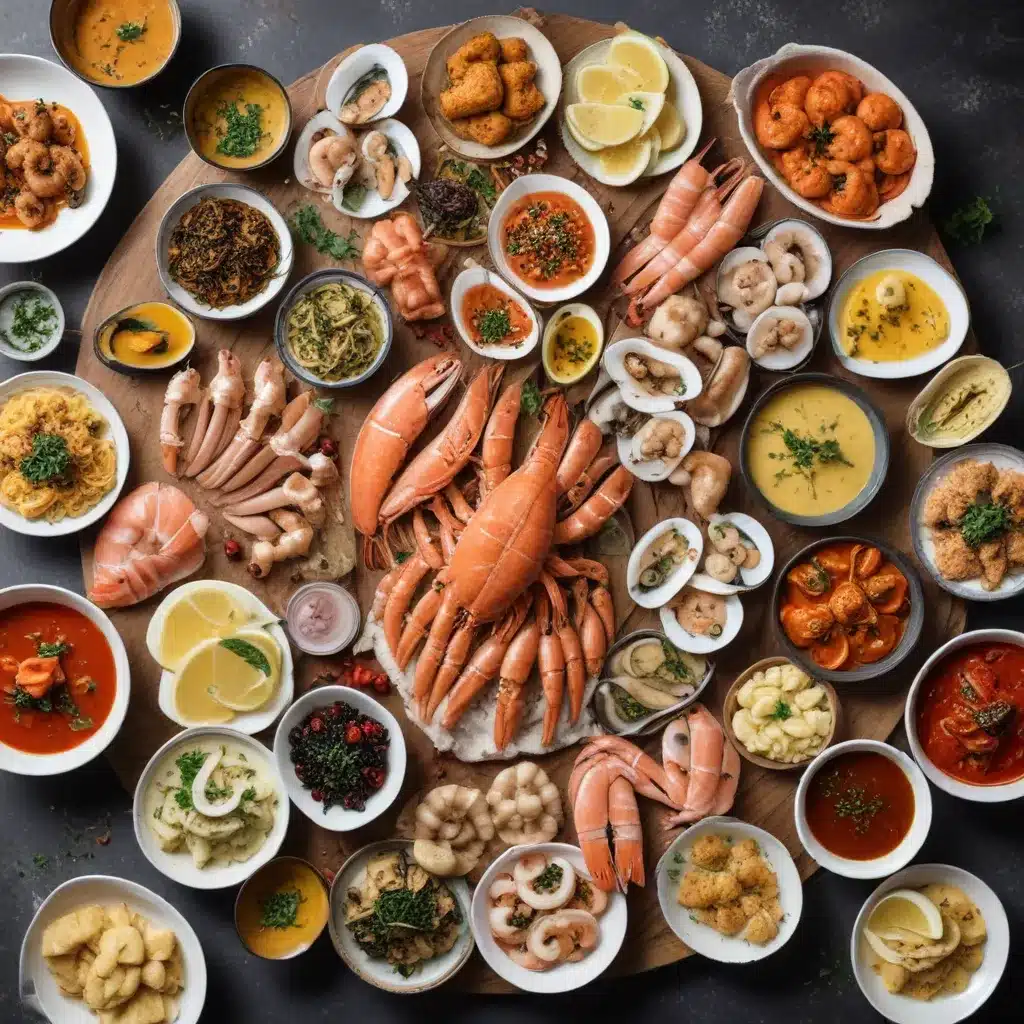
The world’s oceans teem with a breathtaking array of edible marine life, each region boasting its own unique culinary traditions and flavor profiles. From the briny delights of the Mediterranean to the spicy seafood curries of Southeast Asia, the global diversity of seafood cuisines captivates food enthusiasts and novices alike.
Regional Seafood Specialties
Coastal communities have long relied on the bountiful harvests of the sea, developing distinct culinary identities that reflect the local catch and environmental conditions. In the Pacific Northwest of North America, wild-caught salmon and Pacific cod feature prominently in Indigenous and modern recipes, often smoked, grilled or baked. Across the Atlantic, the cod of the North Atlantic has been a dietary staple for centuries, transforming into iconic dishes like fish and chips in the UK and bacalao in Spain and Portugal.
Venturing further south, the Caribbean islands showcase a vibrant seafood tradition rooted in their colonial histories. Conch from the Bahamas, red snapper from Jamaica, and mahi-mahi from the Dominican Republic all find their way into hearty stews, ceviches and fritters that burst with tropical flavors. Meanwhile, the coastal regions of West Africa offer up delicacies like smoked herring and tilapia, often prepared with complex spice blends that pay homage to the culinary influences of the transatlantic slave trade.
Culinary Traditions Across Continents
Seafood has long been central to the diets and cultural identities of coastal communities worldwide. In Japan, the sushi tradition elevates the natural flavors of the sea with masterful preparation techniques and minimalist presentations. Across the East China Sea, Chinese cuisines feature a dazzling array of steamed, braised and stir-fried seafood dishes, each region showcasing its own preferred methods and flavor profiles.
Venture to the Indian subcontinent, and you’ll uncover a vibrant seafood culture that blends the abundance of the Arabian Sea and the Bay of Bengal with the aromatic spices of the hinterland. Tandoor-grilled prawns, fragrant coconut-based curries, and fried fish fritters are just a few of the delectable offerings that define coastal Indian and Sri Lankan cuisines.
Sustainable Seafood Practices
As global demand for seafood continues to rise, the need for sustainable harvesting and consumption practices has become increasingly paramount. Many coastal communities have long upheld traditional methods of line fishing, netting, and aquaculture that prioritize the health of marine ecosystems. These time-honored practices, combined with modern scientific advancements, are helping to ensure the long-term viability of the world’s fisheries.
Consumers can play a vital role in supporting sustainable seafood by making informed choices when dining out or shopping for groceries. Look for seafood certified by reputable organizations like the Marine Stewardship Council (MSC) or Aquaculture Stewardship Council (ASC), which signify a commitment to responsible harvesting and farming methods. Additionally, embracing a diverse array of lesser-known, underutilized species can help reduce pressure on popular but overfished varieties.
Flavors of the Sea
The flavors of the sea are as diverse as the creatures that call it home. Briny, umami-rich notes from oysters, mussels, and clams provide a savory foundation, while the sweet, delicate flesh of tuna, halibut, and sea bass offer a more delicate canvas for culinary exploration. Varying cooking techniques, from poaching and steaming to grilling and frying, can dramatically alter the textural and flavor profiles of seafood, creating endless possibilities for creative chefs and home cooks alike.
Spice and seasoning profiles also play a critical role in defining the regional identities of seafood dishes. The zesty, herbaceous flavors of Mediterranean pesto or Italian gremolata complement the rich, oily flesh of salmon and mackerel, while the aromatic curry powders and coconut milk of Southeast Asian cuisine elevate shrimp, squid, and snapper to new heights.
Aquatic Culinary Diversity
While familiar favorites like tuna, salmon, and shrimp continue to dominate the global seafood market, there is a wealth of lesser-known, underappreciated species worthy of exploration. Monkfish, with its firm, succulent texture, is a prized ingredient in French and Italian coastal cuisines, while the vibrant red mullet of the Mediterranean is celebrated for its delicate, sweet flavor.
Embracing a diverse array of seafood not only expands our culinary horizons but also supports the preservation of marine ecosystems. By diversifying demand, we can reduce pressure on overfished populations and encourage sustainable aquaculture and fishing practices. Innovative chefs and home cooks are leading the charge, showcasing the versatility of squid, octopus, tilapia, and other lesser-known varieties in creative preparations that highlight their unique qualities.
Global Seafood Consumption Trends
As global trade and travel have expanded, the popularity of seafood has soared worldwide. Consumers are increasingly seeking out diverse, global flavor profiles and embracing the health benefits of incorporating more fish and shellfish into their diets. This has led to a surge in the availability and accessibility of seafood, with online ordering, delivery services, and international grocery options making it easier than ever to explore the bounty of the world’s oceans.
However, this growing demand has also shone a spotlight on the need for sustainable seafood practices. Overfishing, habitat destruction, and the environmental impact of aquaculture have become major concerns, prompting a shift towards ethical and eco-conscious consumption. Consumers are now more attuned to sustainability certifications, sourcing transparency, and supporting local, community-based fisheries to ensure the long-term viability of marine ecosystems.
As we continue to navigate the diverse and delicious world of seafood cuisines, it’s crucial that we do so with a commitment to preserving the health of our oceans. By championing sustainable practices, embracing underutilized species, and celebrating the unique culinary traditions that have developed around the world’s coastlines, we can ensure that the bounty of the sea remains bountiful for generations to come. Discover the wonders of global seafood at Fish Tales Cafe and embark on a culinary journey that celebrates the flavors of the ocean.

